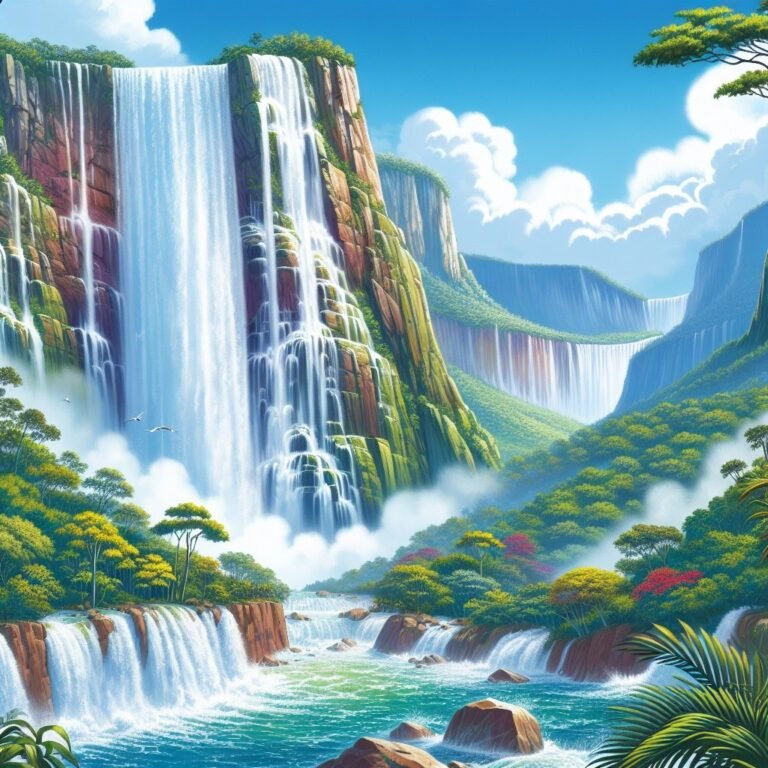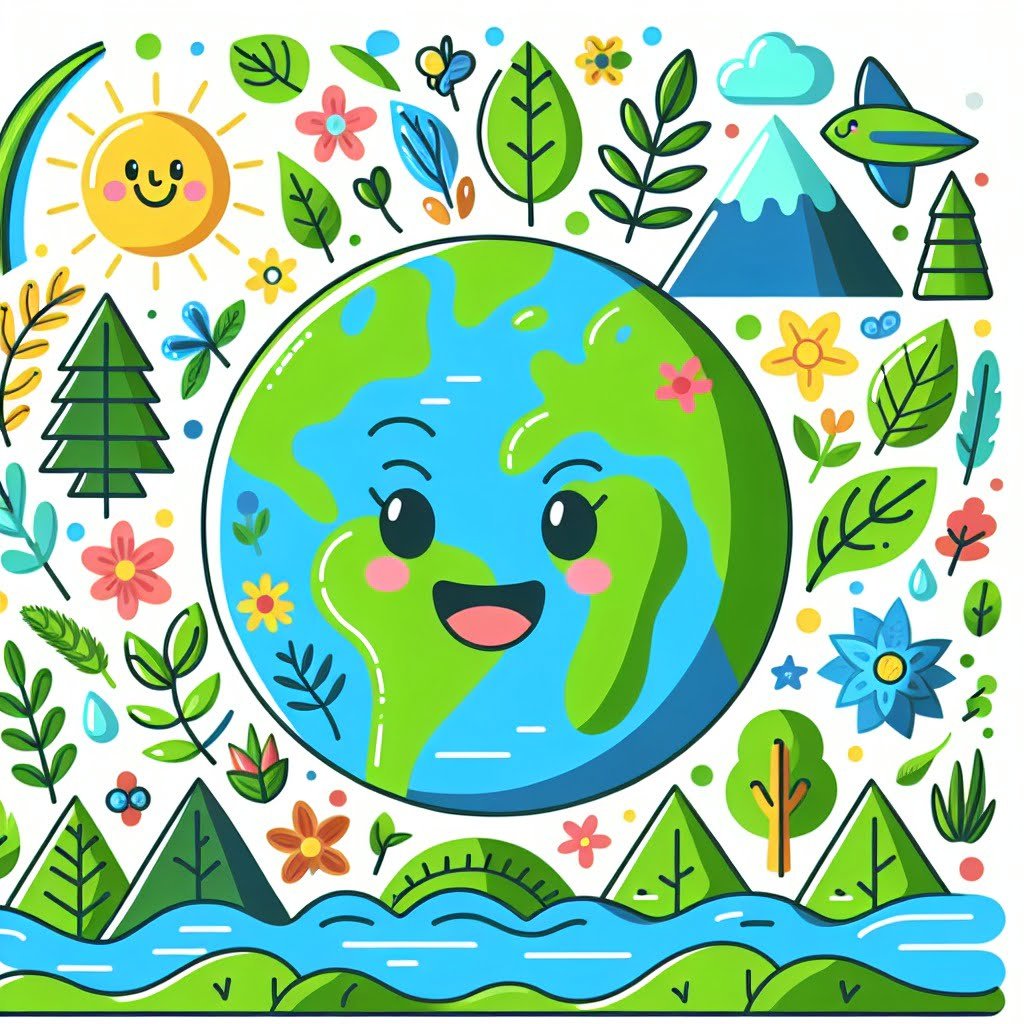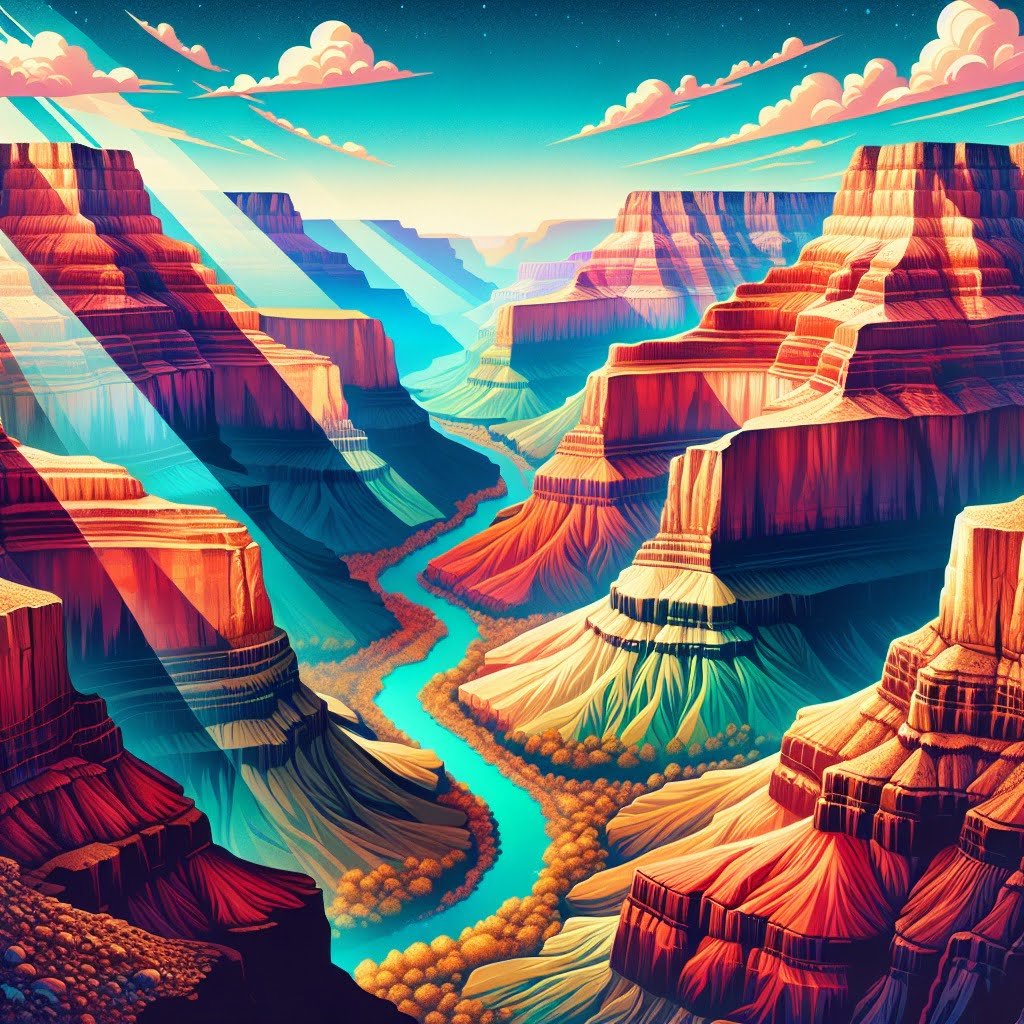Welcome to a world of fascinating facts about mountains for kids! In this blog post, we will dive into the majestic wonders of mountain ranges around the world, from the towering peaks of the Himalayas to the volcanic landscapes of the Cascade Range. As an expert in popular science and a skilled writer, I am excited to share with you the educational and entertaining aspects of mountains that will captivate young minds. Join us on a journey through the diverse ecosystems, rich cultural heritage, and geological marvels of these awe-inspiring mountains. Let’s explore the world of Fun Facts About Mountains For Kids and ignite curiosity and wonder in the next generation of explorers and scientists. Get ready to uncover the secrets and stories hidden within these breathtaking natural wonders!
Facts About Mountains For Kids
1. The Himalayas: Earth’s Roof

For younger kids: The Himalayas are like the biggest mountains wearing snowy hats!
For older kids: The Himalayas, stretching across Asia, include the world’s highest peaks, with Mount Everest towering at 29,032 feet above sea level.
Detailed explanation:The Himalayas are not just any ordinary mountain range; they are often referred to as “Earth’s Roof” because they are the highest and most majestic mountain range in the world. Stretching across five countries in South Asia – India, Nepal, Bhutan, China, and Pakistan – the Himalayas are home to some of the tallest peaks on the planet, including the highest of them all, Mount Everest.
But what makes the Himalayas so special, especially when viewed through the lens of Facts About Mountains For Kids? One fascinating aspect is the fact that these mountains are still growing. The collision of tectonic plates in the region has caused the Himalayas to rise at a rate of about 5 millimeters per year, making them a dynamic and ever-changing geological feature.
For kids fascinated by nature and the natural world, the Himalayas offer a treasure trove of biodiversity. The mountain range is home to a wide variety of plant and animal species, many of which are unique to this region. From snow leopards and Himalayan blue sheep to rare medicinal plants and flowers, the Himalayas are a hotspot of biological diversity waiting to be explored.
Additionally, the Himalayas hold significant cultural and spiritual significance for the people living in the region. The mountains are home to several ancient civilizations and are considered sacred by many religious communities. The rich tapestry of traditions, languages, and customs that have evolved in the shadow of the Himalayas make this region a fascinating and vibrant cultural landscape.
In conclusion, the Himalayas are not just a massive geological formation; they are a living, breathing entity that continues to shape the landscapes, ecosystems, and cultures of the countries that call them home. Exploring the wonders of the Himalayas can be an enriching and enlightening experience for kids and adults alike, offering a glimpse into the intricate and interconnected web of life on our planet.
Facts About Mountains For Kids
2. Volcanic Mountains and Eruptions
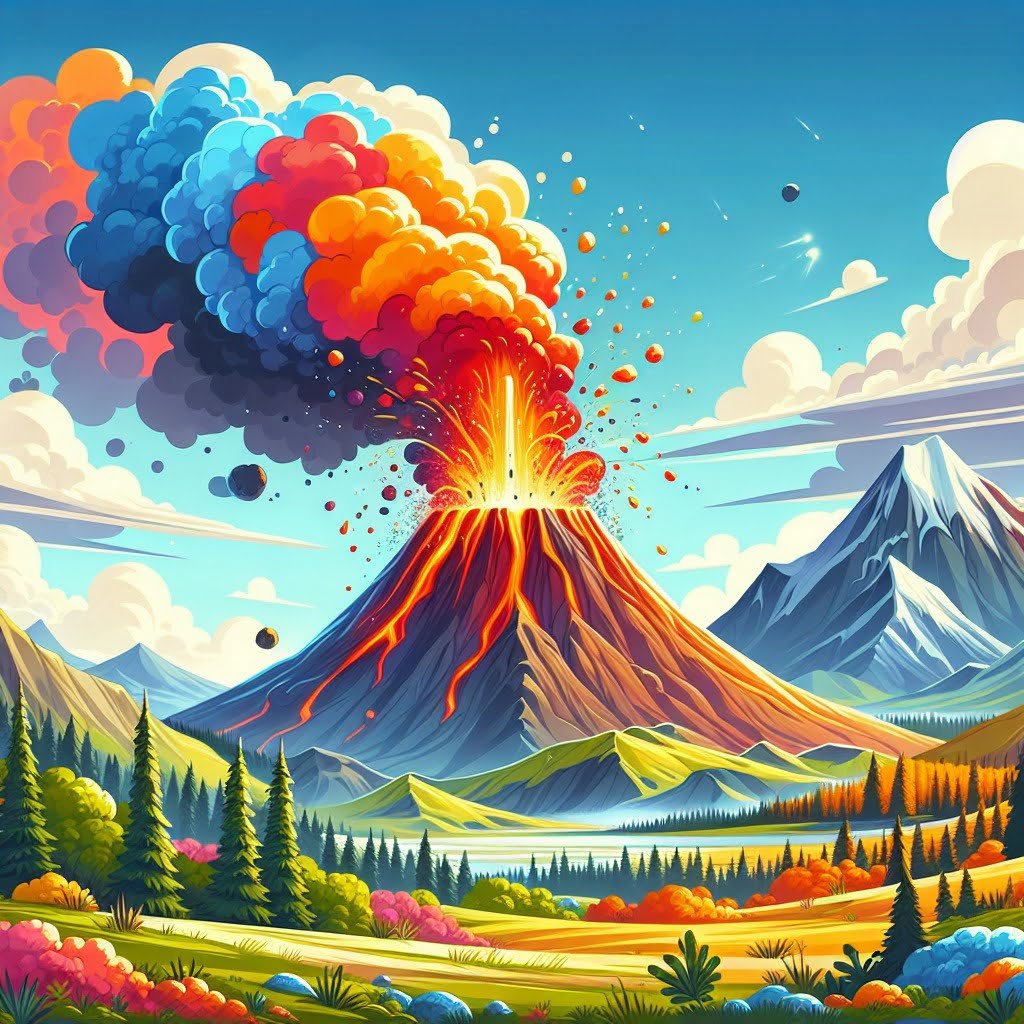
For younger kids: Some mountains can spit out hot, bubbly rock candy!
For older kids: Volcanic mountains, like Mount St. Helens, form from eruptions, with molten rock, ash, and gases escaping from beneath the Earth’s surface.
Detailed explanation:Volcanic mountains are a fascinating geological feature that are formed through the eruption of magma from the Earth’s mantle. These mountains are created when molten rock, or magma, rises to the surface and solidifies, building up over time to form a cone-shaped structure. This process is known as volcanic activity, and it is responsible for the creation of some of the most iconic mountains in the world, such as Mount Vesuvius in Italy and Mount Fuji in Japan.
One of the most interesting facts about volcanic mountains for kids is that they are constantly changing and evolving. Volcanic eruptions can occur suddenly and without warning, as the pressure from the magma beneath the Earth’s surface builds up and eventually forces its way out through cracks and fissures in the crust. These eruptions can be explosive and violent, sending ash, lava, and gases high into the atmosphere.
Another important fact about volcanic mountains for kids to understand is that they are not just destructive forces of nature. In fact, volcanic eruptions can also create new land and shape the Earth’s surface in unique ways. The lava that flows from a volcano can cool and solidify, forming new rock formations and adding to the overall size of the mountain. Over time, these eruptions can create fertile soil that is ideal for agriculture and support diverse ecosystems.
In conclusion, volcanic mountains and eruptions are a dynamic and powerful force of nature that shape our planet in profound ways. By understanding the key processes behind volcanic activity, kids can gain a greater appreciation for the natural world and the incredible forces that shape it.
Facts About Mountains For Kids
3. The Rocky Mountains’ Wildlife Haven

For younger kids: The Rockies are like a giant playground for bears, elks, and other furry friends!
For older kids: The Rocky Mountains in North America are home to diverse wildlife, from grizzly bears to bighorn sheep, thriving in this breathtaking environment.
Detailed explanation:The Rocky Mountains serve as a wildlife haven, providing a home for a diverse range of animals and plants. These mountains, stretching over 3,000 miles from Canada to New Mexico, are teeming with biodiversity. This makes them an ideal destination for nature enthusiasts and wildlife researchers alike.
For kids interested in learning more about the Rocky Mountains, there are several fascinating facts about mountains for kids to consider. One key fact is that the Rockies are home to a variety of large mammals, including grizzly bears, elk, mountain goats, and bighorn sheep. These animals have adapted to the rugged terrain of the mountains, utilizing their strong legs and thick fur to survive in the harsh environment.
In addition to mammals, the Rockies are also home to a wide array of birds, such as bald eagles, peregrine falcons, and great horned owls. These birds of prey play a crucial role in maintaining the delicate balance of the mountain ecosystem, hunting smaller animals and helping to control populations.
One of the most interesting facts about mountains for kids is the presence of unique plant species in the Rocky Mountains. The high elevation and varied climate of the Rockies create the perfect conditions for a wide range of plant life, from towering pine trees to delicate alpine flowers. Kids visiting the Rockies can learn about the importance of preserving these plants and the habitats they rely on.
Overall, the Rocky Mountains are a treasure trove of wildlife and natural beauty, making them a must-visit destination for anyone interested in learning more about the natural world. By exploring the Rockies, kids can gain a greater appreciation for the wonders of nature and the importance of conservation efforts to protect these mountains for future generations.
Facts About Mountains For Kids
4. The Andes: Longest Mountain Range
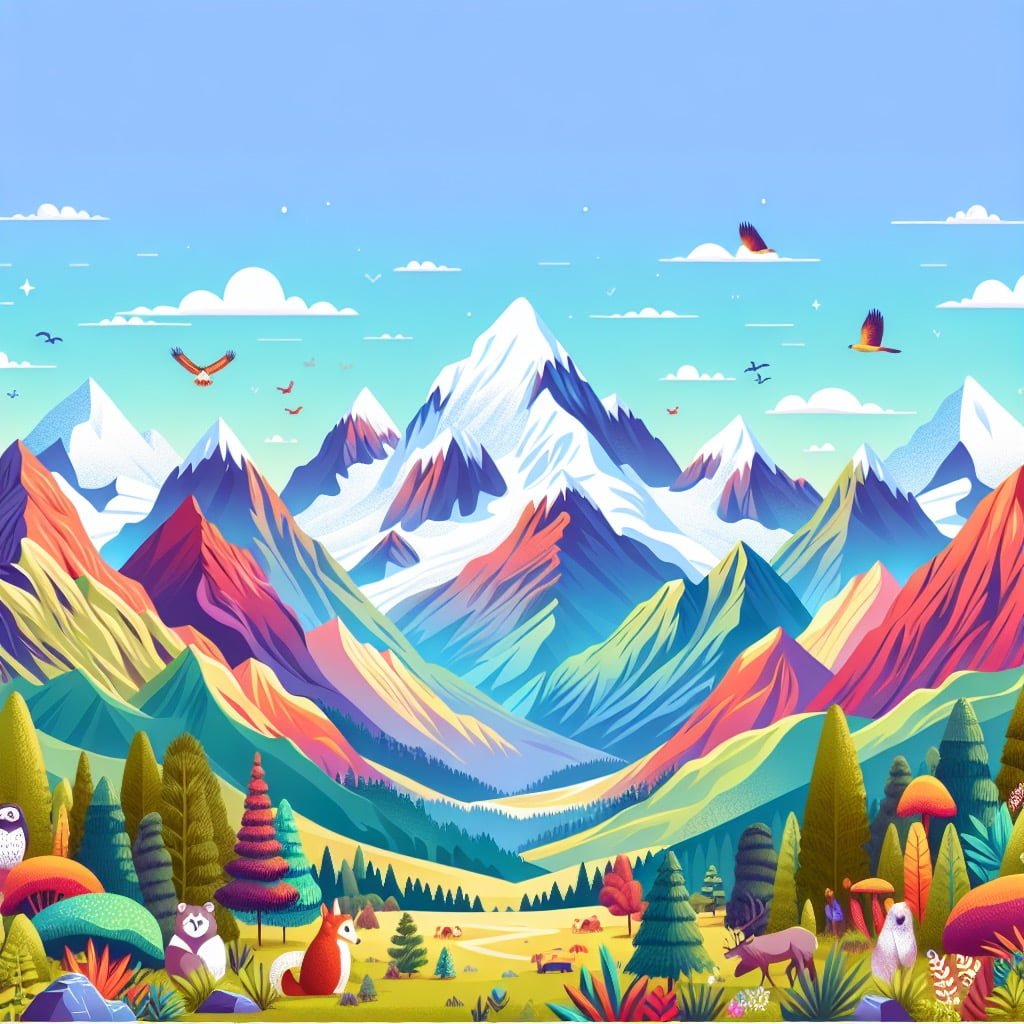
For younger kids: The Andes are like a really long snake made of rocky puzzle pieces!
For older kids: The Andes in South America are the world’s longest mountain range, stretching over 4,300 miles and passing through seven countries.
Detailed explanation:The Andes mountain range is not only the longest mountain range in the world, but it is also one of the most well-known and impressive. Stretching over 7,000 kilometers along the western coast of South America, the Andes are home to some of the tallest peaks in the world, including Mount Aconcagua which rises to over 6,900 meters above sea level.
One of the most fascinating Facts About Mountains For Kids is that the Andes were formed through the processes of plate tectonics and volcanic activity. Millions of years ago, the movement of the Earth’s crust caused the South American Plate to collide with the Nazca Plate, resulting in the uplifting of the Andes and the formation of towering peaks and deep valleys.
The Andes are not just a geological wonder, but also a hotspot of biodiversity. The range is home to a wide variety of ecosystems, from the high-altitude grasslands of the puna to the lush cloud forests found at lower elevations. This diverse range of habitats supports a rich array of plant and animal species, many of which are found nowhere else on Earth.
For kids interested in mountains, the Andes offer a fascinating opportunity to learn about the forces that shape the Earth’s surface and the incredible diversity of life that can be found in mountain environments. Whether it’s exploring the ancient ruins of Machu Picchu in Peru or trekking through the rugged terrain of Patagonia in Chile, the Andes provide endless opportunities for learning and adventure.
Facts About Mountains For Kids
5. The Alps and Glacial Sculptures

For younger kids: The Alps are like a big, frozen ice cream sundae with cherry on top!
For older kids: The Alps in Europe showcase stunning glacial features, sculpted over centuries, including U-shaped valleys and sharp mountain ridges.
Detailed explanation:The Alps are one of the most famous mountain ranges in the world, known for their dramatic peaks, stunning landscapes, and rich history. These mountains were formed millions of years ago through the collision of tectonic plates, causing the Earth’s crust to buckle and rise, creating the towering mountains we see today.
One of the most fascinating aspects of the Alps is the role that glaciers have played in shaping the landscape. These massive sheets of ice have carved deep valleys, steep cliffs, and U-shaped valleys over thousands of years. The process of glacial sculpting is known as glaciation, and it has left a lasting mark on the Alps.
Glaciers are constantly moving, flowing downhill under the force of gravity. As they move, they pick up rocks, debris, and sediment, which act as a powerful erosive force, carving out valleys and shaping the land. In the Alps, you can see the evidence of glaciation in the form of cirques, aretes, and horns, which are sharp, jagged peaks that were shaped by the movement of glaciers.
For kids who are fascinated by mountains, learning about the role of glaciers in shaping the Alps can be a thrilling adventure. Understanding how these massive ice sheets have sculpted the landscape can give them a greater appreciation for the natural world and the forces that have shaped it over time. So next time you look at the majestic peaks of the Alps, remember the incredibleFacts About Mountains For Kids and the powerful forces that have sculpted these breathtaking mountains.
Facts About Mountains For Kids
6. The Appalachian Mountains’ Ancient History
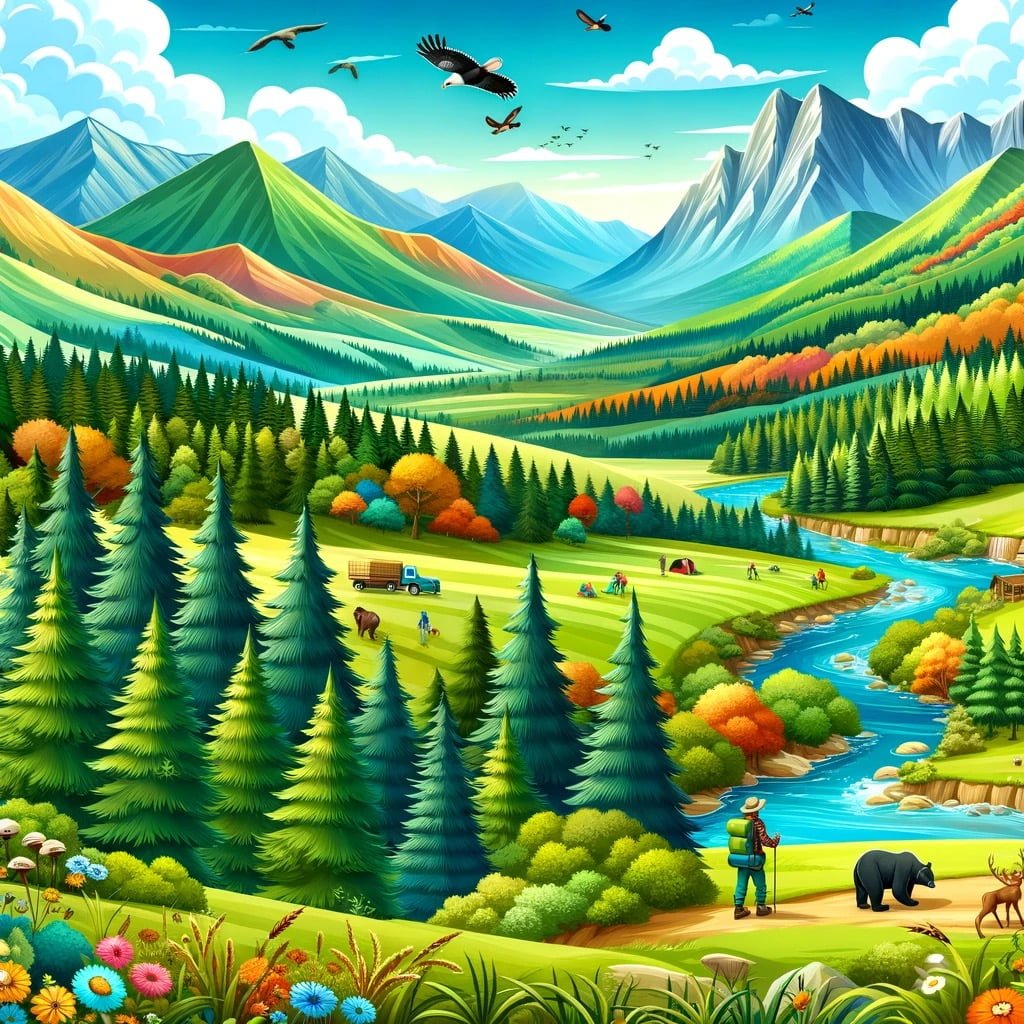
For younger kids: The Appalachians are like really old mountains that tell cool stories!
For older kids: The Appalachian Mountains in North America formed over 480 million years ago, making them one of the oldest mountain ranges on Earth.
Detailed explanation:The Appalachian Mountains are a fascinating geological feature that have a rich ancient history. These mountains are located in eastern North America, stretching from Canada down to Alabama in the United States. One of the most interesting Facts About Mountains For Kids is that the Appalachian Mountains are some of the oldest mountains in the world, with their formation dating back over 480 million years ago.
The Appalachian Mountains were formed through a series of geological processes, including the collision of tectonic plates and the shifting of land masses. Over millions of years, the mountains were pushed up and eroded, resulting in the ridges and valleys we see today. The mountain range is actually a series of smaller ranges and peaks, including the Blue Ridge Mountains, the Great Smoky Mountains, and the White Mountains.
One of the unique features of the Appalachian Mountains is their biodiversity. These mountains are home to a wide variety of plant and animal species, many of which are not found anywhere else in the world. The mountains also play a crucial role in providing habitats for migratory birds and other wildlife.
In addition to their natural beauty, the Appalachian Mountains have also played an important role in human history. Native American tribes have inhabited these mountains for thousands of years, and the mountains were a key route for European settlers moving westward in the 18th and 19th centuries. Today, the Appalachian Trail – a famous hiking trail that runs along the spine of the mountain range – is a popular destination for outdoor enthusiasts and nature lovers.
Overall, the Appalachian Mountains are a fascinating and important geological feature with a rich history. Their ancient origins and unique biodiversity make them a truly special place to explore and learn about.
Facts About Mountains For Kids
7. Mount Fuji’s Cultural Symbol

For younger kids: Mount Fuji is like a big, beautiful cone-shaped mountain in Japan!
For older kids: Mount Fuji, an iconic stratovolcano in Japan, is a UNESCO World Heritage Site and holds cultural significance as a symbol in Japanese art and literature.
Detailed explanation:Mount Fuji is not just Japan’s highest peak, standing at 12,388 feet tall, but it also holds significant cultural symbolism for the country. This majestic volcano is considered a sacred mountain in Japan and has been revered for centuries. It is often depicted in traditional art, literature, and poetry, making it a prominent symbol of Japanese culture.
One of the interesting **Facts About Mountains For Kids** is that Mount Fuji is actually an active stratovolcano, with its last eruption occurring in 1707. Despite its volatile nature, the mountain is a popular destination for tourists and hikers, attracting millions of visitors each year. The climbing season typically runs from July to September, when the weather is more favorable for reaching the summit.
The beauty of Mount Fuji has inspired many artists and writers throughout history. Its perfectly symmetrical cone shape and scenic surroundings have been captured in countless paintings and photographs. In Japanese folklore, the mountain is believed to be inhabited by a deity, adding to its mystical allure.
In addition to its cultural significance, Mount Fuji also plays a practical role in the lives of people living in the region. Its abundant water supply feeds rivers and streams, providing irrigation for farmlands and sustaining local ecosystems. The volcanic soil around the mountain is also rich in nutrients, making it ideal for agriculture.
Overall, Mount Fuji remains a beloved symbol of Japan, representing both the country’s natural beauty and spiritual heritage. Its towering presence and iconic silhouette continue to captivate the imaginations of people around the world, making it an enduring **Facts About Mountains For Kids**.
Facts About Mountains For Kids
8. The Cascade Range and Ring of Fire

For younger kids: The Cascades are like a string of firecrackers in the mountains!
For older kids: The Cascade Range in North America is part of the Ring of Fire, a zone with frequent earthquakes and volcanic eruptions due to tectonic plate movements.
Detailed explanation:The Cascade Range is a mountain range that extends from British Columbia in Canada through Washington, Oregon, and California in the United States. This range is known for its numerous volcanoes, including Mount St. Helens and Mount Rainier. These volcanoes are part of the Ring of Fire, a horseshoe-shaped zone of seismic activity and volcanic eruptions around the Pacific Ocean.
For kids who are interested in learning about mountains, the Cascade Range and the Ring of Fire offer a fascinating look into the powerful forces of nature. These volcanoes are not only spectacular to look at, but they also provide important clues about the inner workings of the Earth. By studying the geology of these mountains, scientists can learn more about how the Earth’s crust is constantly moving and changing.
One of the most interesting Facts About Mountains For Kids is that the Cascade Range is still an active volcanic region. While many of the volcanoes are dormant, there is always a risk of eruption. This constant threat of volcanic activity serves as a reminder of the dynamic nature of our planet and the importance of preparedness for natural disasters.
Overall, the Cascade Range and the Ring of Fire are a perfect example of how mountains can be both breathtakingly beautiful and scientifically intriguing. By exploring these mountains, kids can gain a deeper understanding of the Earth’s processes and the impact of geological forces on our planet.
Facts About Mountains For Kids
9. The Matterhorn’s Pyramid Peak
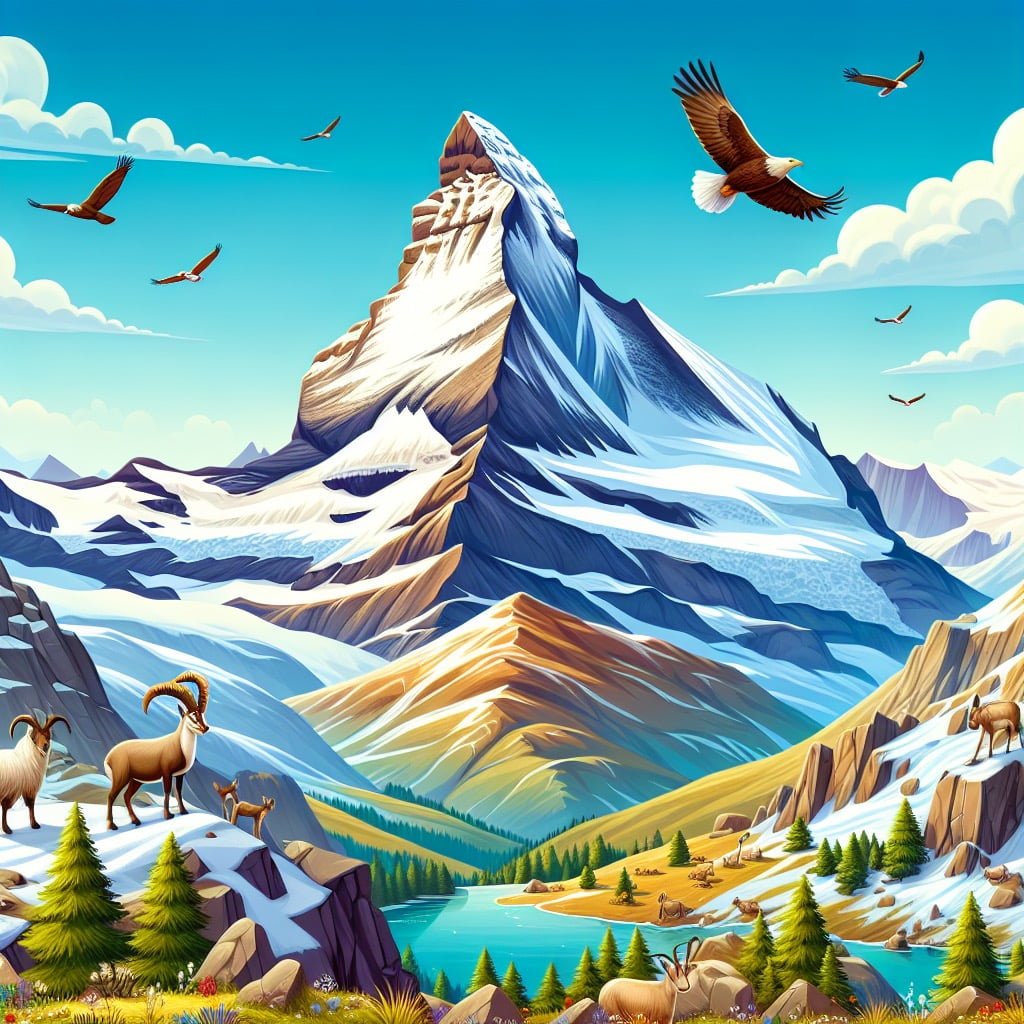
For younger kids: The Matterhorn is like a chocolatey mountain with a pointy tip!
For older kids: The Matterhorn in the Alps, known for its distinct pyramid shape, is a challenging peak for climbers and a symbol of Switzerland.
Detailed explanation:The Matterhorn is one of the most iconic and recognizable mountains in the world, located in the Swiss Alps on the border between Switzerland and Italy. Its pyramid-shaped peak rises to an impressive height of 4,478 meters (14,692 feet) above sea level.
One of the fascinating **Facts About Mountains For Kids** is how the Matterhorn was formed. It is actually a pyramid-shaped horn peak, which was formed through the process of erosion. The peak of the Matterhorn is made up of various types of rocks, including gneiss and schist, which were pushed up from the Earth’s crust during the collision of tectonic plates. Over millions of years, the forces of weathering and erosion sculpted the mountain into its distinctive shape, with sharp ridges and steep cliffs.
The Matterhorn is also well-known for its treacherous climbing conditions, making it a popular destination for experienced mountaineers. The first successful ascent of the Matterhorn was in 1865 by a team led by Edward Whymper, however, the expedition ended tragically with the death of four members during the descent.
In addition to its challenging climbing routes, the Matterhorn is also famous for its stunning views and picturesque surroundings. The mountain is surrounded by pristine alpine meadows, crystal-clear lakes, and charming villages, making it a popular destination for hikers and nature lovers.
Overall, the Matterhorn’s pyramid peak is not only a breathtaking natural wonder but also a testament to the powerful forces of nature and the allure of the mountains for adventurers around the world.
Facts About Mountains For Kids
10. The Sierra Nevada’s High Elevation

For younger kids: The Sierra Nevada is like a snowy playhouse for animals!
For older kids: The Sierra Nevada in the western United States reaches high elevations, impacting climate and supporting diverse ecosystems, from forests to alpine meadows.
Detailed explanation:The Sierra Nevada mountain range is renowned for its high elevation and stunning peaks. As one of the longest and tallest mountain ranges in the United States, the Sierra Nevada is a popular destination for hikers, climbers, and outdoor enthusiasts seeking breathtaking views and challenging terrain.
For many kids, learning about the Sierra Nevada can be a fascinating introduction to the world of mountains. Here are some interesting Facts About Mountains For Kids:
1. The Sierra Nevada is home to some of the highest peaks in the contiguous United States, including Mount Whitney, which stands at 14,505 feet above sea level. This makes it the tallest mountain in the lower 48 states.
2. The Sierra Nevada is a young mountain range, geologically speaking, and is still actively rising due to tectonic forces. This constant uplift contributes to the rugged terrain and steep slopes that make the range so popular among climbers and adventurers.
3. The Sierra Nevada is also known for its diverse ecosystems, ranging from alpine meadows and forests to deserts and lakes. This variety of habitats supports a wide range of plant and animal species, including endangered species like the Sierra Nevada bighorn sheep and the Yosemite toad.
4. The Sierra Nevada plays a crucial role in California’s water supply, as it is a major source of snowmelt that feeds rivers and reservoirs throughout the state. This water is essential for agriculture, drinking water, and maintaining the delicate balance of ecosystems in the region.
Overall, the Sierra Nevada’s high elevation, stunning landscapes, and ecological importance make it a unique and captivating mountain range for kids and adults alike to explore and learn about.
Did You Know?
Mountains influence weather patterns, provide habitats for unique wildlife, and play a crucial role in shaping the Earth’s landscape. Their majestic beauty continues to captivate explorers and scientists alike.
Summary of Facts About Mountains For Kids
Are you interested in sparking the curiosity and awe of children when it comes to the natural world? Exploring the world of mountains is a fantastic way to do just that! Not only are mountains breathtakingly beautiful natural wonders, but they also hold incredible secrets and fascinating stories waiting to be discovered. By delving into fun facts about mountains, children can learn about the diverse ecosystems, geological processes, and unique wildlife that make these towering landforms so special. They can also uncover the history of famous mountains and the daring adventurers who have conquered their peaks.
Reading more about mountains for kids is not only educational but also inspirational. It can broaden their knowledge, deepen their appreciation for nature, and instill a sense of wonder and awe for the world around them. By understanding the importance of preserving these environments, children can develop a greater sense of environmental stewardship for future generations. So, come join us on this educational journey through the fascinating world of mountains and let your imagination soar to new heights!
Sources and additional information for Facts About Mountains For Kids
WikipediaBritannicaEnvironmental Protection Agency (EPA)National Oceanic and Atmospheric Administration (NOAA)The Nature ConservancyWorld Wildlife FundEarth Day NetworkGreenpeace InternationalJane Goodall InstituteEnvironmental Protection Agency (EPA)World Wildlife Fund – ConservationNature ConservancyGreenpeaceUnited Nations Environment Programme (UNEP)Conservation InternationalEarthwatch InstituteEnvironmental Defense FundSierra Club
